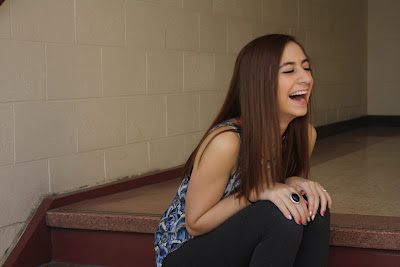Washington DC, 1999
Las Vegas, 2002
Lake Louise, 2000
“How we think shows through
in how we act. Attitudes are mirrors of the mind. They reflect thinking”.
–David Joseph Schwartz.
Lee Friedlander is an American photographer and
artist. He was well known in the 1960’s and 70’s working mainly with 35mm black
and white film.[i] He referred
to his style as “social landscape” with most of his photos including
reflections, and unique framing. Some of my favourite photos include: Washington DC, Las Vegas, and Lake Louise.
He obviously titled the photos with the locations they were taken. Lee
Friedlander is a great photographer because of his unique perspective.
The
photo, “Washington DC” was taken in
1999 for his “American Monument” project.[ii]
This project was one of his later works and documents how memorials in the
United States have many changing landscapes. His unique style calls attention
to these monuments and the new surroundings that have developed over the years.
In the photograph you can see the tip of the Washington Monument in the
background through his car window. The photo is sectioned into three section
horizontally; one including a car mirror with a reflection of town buildings
behind the car, the middle section including a street view with trees and a
pedestrian, while the last section includes part a transparent car window. This
unique segmentation creates a very unusual photo, which takes some time for the
viewer’s eye to take in. The idea of a photograph showing a monument and its
surroundings intrigues me, although years have passed and the environment has
changed, the symbol of the monument is still there. This beautiful photo shows
the contrast between old and new and how symbols last forever.
The
photo, “Las Vegas” was taken in 2002 from
his “America by Car” project. This whole project was shot on the road
throughout America in various Fords, Chevrolets, and Toyotas to symbolize an
“everyday American.”[iii] About half
of the photo is taken up by the interior of Friedlander’s car. In the background
is the famous Las Vegas skyline including the replica of the statue of liberty.
There is a stoplight pole acting as a merger across the skyline, but it adds to
the unique perspective by dividing the photo into even more irregular sections.
Finally, which is common in most of his photographs you see a reflection of pedestrians
crossing a bridge in the distance in his car mirror. Again this unique style
shows well-known monuments in a different light.
His
photo, “Lake Louise” was taken in
Alberta, Canada in 2000.[iv] It is very
different than the previous two photos. Although it does not include his
signature car mirror reflections, it obviously still follows his interest in
reflections. This is one of my favourite photos of his. It is a simple
landscape, yet the use of the reflection makes it almost abstract. The
photograph is of two snow-capped mountain peaks reflecting into the lake
creating a very intriguing hourglass shape. He also included a pile of boulders
in the foreground emphasizing a very clear use of the rule of thirds. This
photo uses his unique reflection to create a beautiful photograph.
In
conclusion I think Lee Friedlander was an amazing photographer whose unique
eye, and interest in reflections gave a deeper meaning to each photo he shot. My
three favourite photographs of his: Washington
DC, Las Vegas, and Lake Louise are
all very different but are obviously his style with the quirky framing and
reflection. Lee Friedlander’s unique perspective made him a great photographer.
Works Cited
"Lee
Friedlander Biography." Metro Artwork. 2012. Web. 1 June 2012.
<http://metroartwork.com/lee-friedlander-biography-artwork-m-76.html>.
"Lee Friedlander." Museum of Contemporary Photography. Web. 01 June 2012.
<http://www.mocp.org/collections/permanent/friedlander_lee.php>.
"Objects
in the Mirror Are Closer than They Appear." Photourbanism.
Web. 03 June 2012. <http://www.photourbanism.co.uk/2010/11/25/objects-in-the-mirror-are-closer-than-they-appear/>.
"A Sly Virtuoso." The New York Times. The New
York Times. Web. 03 June 2012.
<http://www.nytimes.com/2005/06/03/arts/design/03kimm.html?pagewanted=all>
1/100, F7.1, ISO 200
I took this photo to emulate Lee Friedlander's work. I am quite happy with the result. It was taken out of the window of my car to create the unique framing style he has as well as copy his many projects taken out of car windows. In the background you see farmland which is under development, and in the reflection in the side mirror you see a newly developed subdivision. What I think is interesting about this photo is at the bottom of the mirror in the reflection you see "objects in mirror are closer than they appear". This is almost eerie in representing how the farmland you see in the background will soon be developed into yet another housing plot. I think this emulated Friedlander's work very well because it uses both his quirky style, and conveys a message to the viewer using the reflection. I am very happy with this photo!






















